Hans Rudolf Thull (born 6 December 1945) is a German artist who works in the fields of photography, collage and sculpture. He was one of the first German contemporary fine-art photographers to have his work shown in solo exhibitions in German art museums. [1]
Thull grew up in Bochum, Germany, in an artistically inclined household; his father was concertmaster of the Bochum symphony orchestra. In 1968 he began studying visual communication/photo design/fine-art photography at the Dortmund University of Applied Sciences and Arts, where Pan Walther was among his teachers; he completed his studies in 1973, receiving his degree as a Diplom Designer.
After finishing his studies he began his career as an independent fine artist. He initially worked almost exclusively in the field of fine-art photography. From 1983 to 1986 he served as a lecturer at the Dortmund University of Applied Sciences and Arts, where he taught primarily experimental and fine-art photography. [2]
During a decisive period lasting from 1989 to 2000 he explored additional art forms: collage and sculpture. His affinity for these areas had already been displayed in isolated earlier works, for example, in his 1985 sculpture "Boden–Raum–Skulptur" for the Ruhr valley project "gRenzüberschreitung".
Thull’s work has been exhibited at major German and international museums in exhibitions organised by prominent curators, such as Thomas Grochowiak and Uwe Rüth. His first exhibition was "Realität – Irrealität", together with Rolf Glasmeier; it was shown at the Ludwig Galerie Schloss Oberhausen and at the Kunsthalle Recklinghausen from 1979 to 1980. He was thus one of the first German contemporary fine-art photographers to have his work shown in solo exhibitions in German art museums.
Hans Rudolf Thull lives and works in Bochum.
In his work the exploration of various phenomena related to dualisms and interaction provide the primary point of departure.
In his photographic works Thull generates dualisms by removing everyday objects and situations from their original framework and placing them in a different context using means that range from unconventional cropping and camera techniques to shaking or moving the camera while shooting. These interactions lead to a break with traditional visual habits, provide motifs with a new identity and reveal dualities. Thus they "contain propositions and possibilities for viewers to stir their imagination and to activate creative impulses through their own contemplation and activity". [3] His photographic series can thus be categorised as examples of experimental photography, and some of them also as "Subjective Photography" (Subjektive Fotografie). Thull works primarily in colour, both with middle-format analogue (film) photography and with full-frame digital SLR.
His collages focus on the duality of media–consumer. Using primarily print media he employs various techniques of cutting, tearing and gluing as well as contradictory arrangements in terms of sequence, accumulation and reduction to generate sensory disruptions – calling into question the perceptual processes that have been imposed upon us: "Everyday symbols have, so to speak, taken over an additional level of reality." [4]
It is generally possible to physically interact with his sculptures made of tubular and plate steel, which take the dualities of viewpoint–perception and surface–space as their theme; they generate interactions between form, material, light, viewer and environment. "By changing standpoints or perspectives a communicatively variable whole is created in the crossing of visual boundaries." [5] The basis of his works is provided either by flat, geometric steel plates – which are lifted from the plane and into space by means of incisions, angling their corners, causing them to buckle and through their placement relative to one another – or by steel pipes, which he toarranges in serial or geometric systems.
1979 Ludwig Galerie Schloss Oberhausen (solo) and Kunsthalle Recklinghausen (solo)
1981 Ludwig Galerie Schloss Oberhausen
1983 Osthaus-Museum Hagen
1984 Goethe House New York (solo)
(with Rolf Glasmeier, Robert Häusser and Pan Walther)
1985 Kunstverein im Revier, Essen/Kunstmuseum Gelsenkirchen/Skulpturenmuseum Glaskasten, Marl
1985 Skulpturenmuseum Glaskasten, Marl
1985 Museum of Modern Art, Toyama, Japan
Contribution of the Federal Republic of Germany (with Rolf Glasmeier)
1989 Olympus Galerie, Hamburg (solo)
2009 Künstlerzeche Unser Fritz 2/3, Herne
2009 Skulpturenmuseum Glaskasten, Marl
2002 Open square in front of the Thürmer-Saal/Volksbank Bochum

Ottmar Hörl is a German conceptual artist, sculptor, installation, action, photography, and object artist. He achieved worldwide popularity due to his radical, avant-garde art concepts as well as large-scale projects featuring serial sculptures in public spaces, based on his distinctive definition of sculpture as an organisational principle. He is considered an "offensive and direct strategist campaigning for a new type of public art" and the most successful artist creating multiples, an artist implementing his vision of art for everyone and promoting the democratisation of sculpture like no other so far. His important contributions in the field of fine arts have earned him several awards, the latest of which, the CREO Innovation Award, was granted by the German Society for Creativity and presented to Hörl at the Goethe University in Frankfurt am Main in 2015. Since 1999, Hörl has held a chair as professor at the Academy of Fine Arts in Nuremberg, and has been the Academy's president since 2005. Moreover, he is a founding member of the group Formalhaut. Ottmar Hörl lives and works in Wertheim, Frankfurt am Main and Nuremberg.
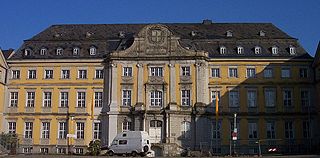
The Folkwang University of the Arts is a university for music, theater, dance, design, and academic studies, located in 4 German cities of North Rhine-Westphalia. Since 1927, its traditional main location has been in the former Werden Abbey in Essen in the Ruhr Area, with additional facilities in Duisburg, Bochum, and Dortmund, and, since 2010, at the Zeche Zollverein, a World Heritage Site also in Essen. The Folkwang University is home to the international dance company Folkwang Tanz Studio (FTS). Founded as Folkwangschule, its name was Folkwang Hochschule from 1963 until 2009.
Florian Dombois is an artist who focuses on time, landforms, labilities, seismic and tectonic activity, as well as on their various representational and media formats.

Janet Biggs is an American artist, known for her work in video, photography and performance art. Biggs lives and works in New York City.
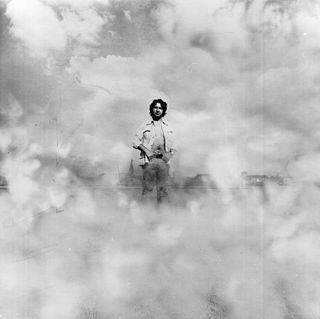
Gotthard Graubner was a German painter, born in Erlbach, in Saxony, Germany.

Ulrike Arnold is a German artist.
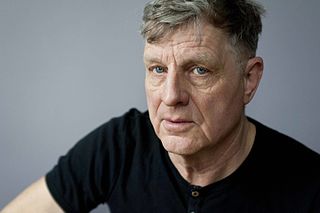
Rainer Fetting is a German painter and sculptor.

Clemens Weiss is a German artist living in the United States.
Heinz Mack is a German artist. Together with Otto Piene he founded the ZERO movement in 1957. He exhibited works at documenta in 1964 and 1977 and he represented Germany at the 1970 Venice Biennale. He is best known for his contributions to op art, light art and kinetic art.

The Moltkeviertel is a district of the German city of Essen. It is located near the centre of the town, as the crow flies just over a kilometre to the south-east of the Essen main railway station. It is bounded by the thoroughfares Kronprinzenstrasse, Ruhrallee, Töpferstrasse and Rellinghauserstasse and by the railway line from Essen Main Station to Essen-Werden. Administratively, it belongs to the urban districts of Essen-Südostviertel and Essen-Huttrop. The centre point of the Moltkeviertel is the Robert-Schmidt-Berufskolleg, formerly the Königliche Baugewerkschule Essen, at the corner of Moltkestrasse and Robert-Schmidt-Strasse.
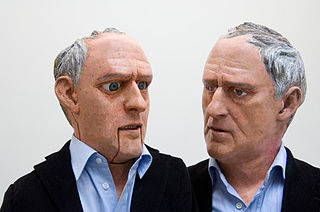
Stephan Huber is a German sculptor and object artist.
Ursula Neugebauer is a German artist.
Doris Schöttler-Boll was a German artist. She is known for her de-constructivist works that she initially described as a result of Photomontage and Collage.

Anatol Herzfeld was a German sculptor and mixed-media artist, and also a policeman. A student of Joseph Beuys, he primarily used wood, iron and stone as materials. As an artist, he simply signed Anatol. He received attention for a happening, crossing the Rhine in a boat he created with Beuys, after Beuys had been expelled from the Kunstakademie Düsseldorf.

Myriam Thyes is a new media artist from Switzerland. She lives and works in Düsseldorf.
Stefan Heyne is a German photographer and stage designer. He lives and works in Berlin.
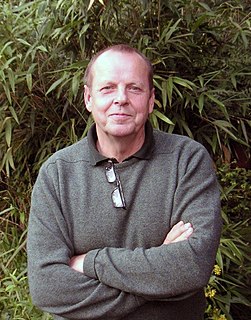
Peter Schwickerath is a German sculptor.
Mat Hennek is a German fine art photographer.
Rita Rohlfing is a German painter, photographer and installation artist.
Lena Henke is a German sculptor, photographer and installation artist.